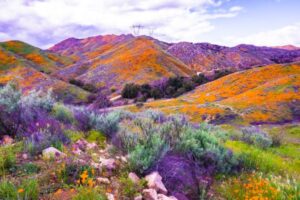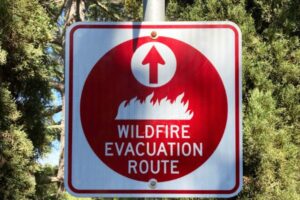It took the tireless effort of many indigenous American grassroots movements with the rallying cry of “Water is Life!” So, the victory was due to the dedication of multiple indigenous tribal leaders and members. What’s more, it captured international attention from climate crisis organizations around the world.
But now it’s over! On June 9, 2021, the New York Times proudly made a startling announcement: Canadian officials have canceled the Keystone XL Pipeline Project.
Victory Over the XL Pipeline. What Comes Next?
Why was this fight so important? Because it represented the division between supporters of fossil fuels and defenders of planet earth. This pipeline extension was a barometer for the United States’ commitment to clean energy, or perhaps the lack thereof.
Moreover, the fight against this pipeline became an embodiment of the fight against climate change. Victory Over the XL Pipeline and the others left to shut down symbolizes one hopeful thought: Restorative clean energy is in… and old-fashioned oil and gas energy is on its way out.
While the struggle lasted for 13 years, many weren’t aware of the Keystone XL Pipeline Project at all. To really appreciate this victory, I need to start at the beginning of the struggle. I need to tell the history of this project and how it snowballed into such a big fight. I will also explain why so many climate change organizations fought against it. So, let’s discuss the issue… the WHOLE issue.
“This is about our life and our wildlife and our water. This pipeline made no sense years ago… It makes less sense now”
Winona LaDuke, Honor the Earth
What was the XL Pipeline Project?
The XL Pipeline Project was an addition to an existing pipeline called the “Keystone Pipeline”. According to Wikipedia, the Keystone Pipeline is a petroleum pipeline that pumps oil from Canada into the United States. It currently runs from Alberta, Canada to refineries in Texas and Illinois. Additionally, the pipeline pumps crude oil to a separate distribution center in Oklahoma.
Originally, TC Energy proposed the extension in 2008. The XL Pipeline would pump over 800,000 barrels of oil per day. This crude oil would run from Central Alberta to the US Gulf Coast of Texas. That’s 2,100 miles in total.
To get to the US Gulf Coast, the pipeline must travel from the middle of Alberta Canada, through Montana, South Dakota, Nebraska, Kansas, OK, to Houston Texas. TC Energy estimated the cast at $5.3 Billion, although some estimates listed total costs as high as $8 Billion dollars.
An article by the Wall Street Journal says that oil prices were at a historic high when the project was first proposed. In addition, the demand for crude oil in the US was at its highest.
However, in 2008, the US experienced a “Shale Oil Revolution”. This term refers to the revolutionary use of sedimentary rock to produce liquid hydrocarbons called “Shale Oil”. Suddenly, the US was able to produce organic-rich shale oil and natural gas using horizontal drilling. The US’s increased ability to produce oil and gas would potentially lower the demand for Canadian oil substantially.
Nevertheless, TC Energy continued its push to get the Keystone extension project to approve. Also, after spending millions of dollars in lobbying and advertising, the project was approved by the National Energy Board in 2010. TC Energy’s antics brought national attention to the victory over the XL pipeline as well as those left to shut down.
What were the “Positives” of the Keystone XL Pipeline?
Canada contains the world’s 3rd largest reserve of heavy crude oil. In addition, the US Gulf Coast has large refineries specifically designed to be capable of processing hundreds of thousands of barrels of heavy oil daily. A match made in heaven, right?
Admittedly, there were a few “positives” in connecting Alberta, Canada with Houston, Texas. To tell the WHOLE story of the victory over the XL Pipeline and the others left to shut down, I must mention the “positives”. After which, I’ll list the negatives and let you decide whether these positives outweigh the negatives.
830,000 barrels of oil per day:
The idea is that, regardless of this pipeline, crude oil must enter the United States one way or the other. This pipeline meant getting more oil from Canada. In turn, this meant less reliance on oil from overseas.
Property tax income:
In 2009, TC Energy became the sole owner of the Keystone Pipeline. TC Energy would pay property tax payments to every state which the Keystone extension passed. That fact might explain why the South Dakota Public Utilities Commission eagerly granted a permit for this project to move forward in February 2010.
A more efficient method:
Crude oil which does not enter the US through pipelines crosses the border by railroad. Trains transport far fewer barrels than a pipeline can due to train routes. This pipeline would have avoided transporting millions of barrels of crude oil by train. Since Canadian oil is going to make its way into the US regardless, why not utilize the most efficient method possible?
42,000 jobs.
TC Energy estimated that the construction of the Keystone XL Pipeline would provide over 42,000 jobs. Based on an article by NPR news, most of these jobs would have been construction jobs.
What are the “Negatives” of the Keystone XL Pipeline?
The Keystone XL Pipeline presented far more than just an “eyesore” to the ranchers in South Dakota. Cattle rancher Brett Clanton spoke in a recorded interview with The Guardian about the Keystone XL Pipeline. In the interview, Brett explained,
“TransCanada (now called TC Energy) has taken away 3-miles of my land in a settlement to build the pipeline”
— Brett Clanton
Here are some of the “negatives” that this country has avoided with this victory over the XL Pipeline:
The job estimate was deceptive.
Lobbyists stated the 42,000 jobs figure in advertising, and even quoted by Donald Trump, President of the United States. When you hear a figure like that, it makes the opposition to the project seem unreasonable.
However, this figure omits one important piece of information. The vast majority of the 42,000 jobs were temporary. An article published by NPR news listed the number of permanent jobs at only 50. Other sources list the number as low as 35.
The oil goes to foreign nations.
Representatives from BP and Shell made public proclamations stating the Keystone Pipeline extension was “good for American consumers”. On the contrary, the 830,000 barrels moving from Alberta to Texas would compete in a different market. Profit margins are lower in the Gulf’s oil market because of oil produced in Mexico.
To make a profit, TC Energy would sell a great portion of the oil to overseas markets. That’s good for TC Energy and companies like BP and Shell, but it is little benefit to the American consumer. In an interview with The Guardian, South Dakota Tribal Relations Secretary Steve Emery said he didn’t expect the pipeline extension to make an economic impact on South Dakota or any of the bordering tribes.
It’s dirty oil.
The oil from Alberta, Canada is a heavy grade of tar sand oil. The industry refers to this type of oil as “dirty oil”. Refining this type of oil requires much more energy. What’s more, the process generates more greenhouse gases that are bad for the environment.
In addition, the end-product contains far more carbon; hence the term “dirty oil”. Jared Margolis, a senior attorney at the Center for Biological Diversity, “We need to keep moving away from dirty, dangerous pipelines that lock us into an unsustainable future”
Puts 1/3 of the US water supply at risk.
There are 9 indigenous tribal nations in the Midwest. Unfortunately, the Keystone XL Pipeline impacts the tribal reservations of at least three of these tribes. The largest impact is disturbances to their source of water.
For example, Nebraska has the largest natural reservoir of water underneath it. This state’s natural ecosystem supplies water to 1/3 of the United States. If there is a pipeline break, it will contaminate 1/3 of the US water supply.
Apparently, this is a fact which TC Energy could care less about. For them, it’s simply a technical matter of the shortest distance between Alberta and Texas.
Undermines our fight against global warming.
The statement “crude oil must enter the US regardless” is an assumption. The fact is, the XL Pipeline extension undermines the commitment that every member of the United Nations made in the Paris Agreement. Of course, our commitment is to reach “Net-Zero” carbon emissions by the year 2050.
However, this pipeline extension was not a step towards our goal. In addition, bringing more crude oil into the United States faster was a step in the opposite direction. That is why victory over the XL Pipeline and those left to shut down is critical.
After this victory over the XL Pipeline, What’s next?
June 9, 2021, will go down in history as a significant date in the fight against global warming. It is the day that the Canadian government confirmed TC Energy has terminated the XL Pipeline Project.
Canadian officials cited President Joe Biden’s act of revoking the US Federal permit as the reason for the decision. After the announcement of the cancellation, Larry Wright Jr., Chairman of the Ponca Tribe of Nebraska made this statement,
“On behalf of our Ponca Nation, we welcome this long-overdue news and thank all who worked so tirelessly to educate and fight to prevent this from coming to fruition. It’s a great day for Mother Earth”
— Larry Wright Jr.
Clayton Thomas Muller, senior campaigns specialist at 350.org and longtime Keystone Pipeline opponent had this to say about the win,
“This victory is thanks to Indigenous land defenders who fought the Keystone XL pipeline for over a decade. Indigenous-led resistance is critical in the fight against the climate crisis and we need to follow the lead of Indigenous peoples, particularly Indigenous women, who are leading this fight across the continent and around the world”
— Clayton Thomas Muller
This victory is significant. But, it also represents the first time in history that grassroots groups of activists targeted a multibillion-dollar “Big Oil” project and won. So, now what? Now that the fight over the Keystone XL Pipeline extension is over, are there other pipelines? What’s next? Muller commented on this as well,
“With Keystone XL cancelled, it’s time to turn our attention to the Indigenous-led resistance to the (other) pipelines”
— Clayton Thomas Muller
The Line 3 Pipeline
The cancellation of the XL Pipeline project should give activists around the world motivation to fight even harder to save the earth. And yes, there are other pipeline extensions to fight against. Donald Trump approved a few pipelines during his presidency. They’ve become known as the “Trump Pipelines”.
TC Energy is not the only Canadian company piping crude oil into the United States. Enbridge Corporation, also based in Canada, owners the “Line 3 Pipeline”. Amazingly, It extends from Alberta, Canada to Superior, Wisconsin.
This pipeline has been in operation from 1968 to the present. Unfortunately, because this pipeline is already over 50 years old, Enbridge is constructing a replacement that will increase the number of barrels transported into the US daily.
Enbridge Corp. completed the new pipeline on the Canadian side of the border. Likewise, the project is complete in Wisconsin and North Dakota. Thankfully, the project has met resistance from Native American families and climate change activists in Minnesota. Bill McKibben co-founder of 350.org made this simple comparison.
“How can anyone with a straight face not reject Line 3? It’s exactly the same size and it’s carrying the same stuff (as Keystone XL)”
— Bill McKibben
Winona LaDuke of Honor the Earth emphasized on the day of the Canadian’s termination of the Keystone SL that direct action against the Line 3 expansion will continue until that project is dead as well. Thanks to the victory over the XL pipeline, new energy will go towards those left to shut down.
“This is about our life and our wildlife and our water. This pipeline made no sense seven years ago. It makes less sense now”
— Winona LaDuke
What can we do to help?
Immediately following the cancellation of the Keystone XL Pipeline, climate activists and tribal leaders organized to start sending a message to President Joe Bidden and Vice President Kamala Harris. In addition, their message to the Democratic White House is for them to follow up with more action.
Although we may have won one battle, there is more work to do in the war against fossil fuel. In fact, one national organizer with the Indigenous Environmental Network, Joye Braun, said during a press call.
“It’s time for the Biden administration to make good on his promises. They promised they wanted to get it right with tribal leaders”
— Joye Braun
You can help by contacting reaching out to Congress and make your voice heard. Put pressure on your local politician to continue the fight against pipelines flooding the United States with crude oil. Moreover, demand that they put these billions of dollars into the infrastructure that supports clean energy.
So, let’s put pressure on our state and federal representatives to support alternative energy sources that will render all “dirty oil” pipelines as extinct as the dinosaur industry they represent. Interestingly, Jared Margolis, Senior Attorney said the following to the press.
“We’re hopeful that the Biden administration will continue to shift this country in the right direction by opposing fossil fuel projects that threaten our climate, our waters, and imperiled wildlife”
— Jared Margollis
Join the fight! After all, it is our responsibility to help climate crisis organizations in the next fight, and then to join in on the fight after that. I agree with Tim Dickinson of Rolling Stone magazine. In his article concerning the victory over the Keystone XL Pipeline and the pipelines that are still left to be shut down, he said the following.
“Never doubt that a group of thoughtful, committed people can change the world. One of them just did!”
—Tim Dickinson
Resources
Conclusion:
It is our wish that you find this post enlightening and helpful. If you have any questions or suggestions, we love to hear from you in the comments below. Also, kindly accept our invitation to join our group on Facebook to surround yourself with kindred spirits and post your encouraging messages.












































